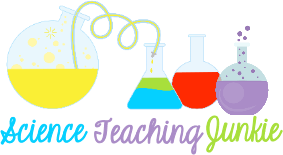First Book is a nonprofit social enterprise that provides brand-new books to classrooms and community programs serving kids in need. They distribute over ten million books every year to children across the country, thanks in part to partners like Lockheed Martin.
Any educators serving students in need or working at a Title I school can sign up to get books for their kids – for free and at low cost – online: http://www.firstbook.org/receive-books
I am big supporter of STEM in the middle school classroom. When Brian Minter of FirstBook offered this infographic to share with my readers, I jumped on the opportunity. I know that the "STEM movement" is only on the cusp in some middle school classrooms, but I think FirstBook provides a great service to lower income schools in providing them with resources they may not otherwise have access to.
In working towards earning my Masters of Science in Multidisciplinary Science (STEM) from Texas Tech University, I became more and more aware of the many connections that exist between science and math. It has dramatically impacted my teaching style and has made me a better science teacher. Before, I would stick to my science standards that the state had laid out for me, without even being remotely aware of the standards being taught in the math classroom (right next door to me!). I am embarrassed to say it now, but I know that there are others out there.
My expertise is science....I went to school and got a science degree... I wanted to be a science teacher, never a math teacher. But how can you teach/do science without math? And what real-life application does math have without some mention of science? The answer is... you can't and it doesn't!
We, as science teachers need to do a better job of partnering up with our math teachers to find the common themes, use common vocabulary and find the connections that exist and make them clear and known to the students. So many of my students for so many years have seen each content area as separate. They ask "Why are we reading in science?", "Why do we have to use correct grammar in science", "Why are we doing math in science class?" They truly think that subjects don't overlap or relate at all, which in my opinion is a huge travesty. In the real world, there is no separation. To do most jobs well, you need to be able to read, write, look at data, recognize when information being presented to you is not backed by substantial evidence and when it is. In the real world, there are no distinct content areas.
Think this seems too overwhelming or don't know where to start? Wait a minute...it truly is easy.
If you don't know where to start, simply look at the concepts you teach that involve math. Make a list of these concepts and visit a math teacher.
What vocabulary do they use? I was surprised to see that some of the vocabulary was exactly the same, while there were some terms that were similar, but without making the students aware of the similarity, they may have never made the connection.
At what point in the year does the math teacher teach a similar concept or review this concept that was learned in previous years? Will you (the science teacher) be the first one introducing the concept or will the math teacher? If you come to the material first, what is the best way for you to teach the math portion? Does the math teacher have any tricks?
What ideas in science are supported by the math concepts? Calculating speed is a great example. Recognizing that speed is a rate will reinforce what they are taught in math. How does this rate look when graphically represented? Force, mass, and acceleration calculations work as well. Measurement is an obvious overlap and unless you live in the land of miracles, middle school kiddos still struggle with measurement. Density, work, Newton's Laws, the list goes on and on.
Give kids a reason to use the math and I promise they will become more involved (even the most reluctant student.)
There are also a lot of math teachers who would benefit from this dialogue. Students who struggle in seeing the value or application to the math they are learning might excel when shown what this math can be used for in the context of science.



No comments:
Post a Comment